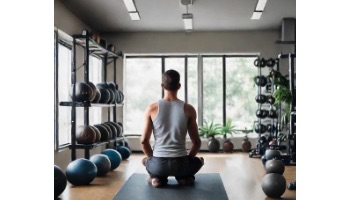This year I have been working extensively with visualization. I have learned that it is a powerful tool for both physical training and for mental health. In my work as a strength and conditioning coach my colleagues and I have been using it to help our athletes, from professional performance artists to Olympians, train more effectively and to more easily find flow states when in performance or competition. As a therapist, I’ve been using visualization to help individuals work on trauma. What’s been most exciting to me is seeing the tremendous overlap amongst these diverse populations and to begin to combine the benefits of visualization for both performance and mental health.
Visualization in a Nutshell
Visualization is basically imagining something. In athletics you can imagine yourself performing on stage or competing in a sport. You can do it such that you are seeing yourself from the outside, like watching a movie in your mind, or you can imagine being in the situation while trying to get in touch with how it physically feels to do the activity.
In the therapy setting you can use visualization to help you manage unpleasant experiences or to up- or down-regulate emotions. For example, imagining a safe place like a beach or a forest can help you feel the affect or emotion of safety. From there, you can look at what you notice in your body, such as physical feelings of lightness in the chest or soldiers, or any number of other phenomena.
Working in the Overlap
If you are using visualization there is an opportunity to target physical and mental benefits at the same time. Anxiety is a good example. A professional performance artist such as a dancer, let’s say, might visualize themselves doing a développé (a lateral leg lift, more or less) and notice that they experience tension in the neck and shoulders. As they work with that, they may realize that this relates both to how their body performs the movement and to stress or anxiety, perhaps about the performance or maybe carried over from other areas in their lives. By working with visualization on either, or both, ends of the spectrum, i.e. in physical training or in a mental health capacity, they can learn to manage that tension/anxiety, thereby improving their performance. Excitingly, that could mean better développés and a better general sense of well-being.
As a caution, having guidance from a professional, particularly in the mental health realm, is key if you want to do targeted work. If you’d like to dabble in the phenomenon more generally, you can try beginning a mindfulness practice using a body scan. The common apps like Headspace and Calm offer them, as do many others. This is not exactly visualization as I’ve describe above, but it is useful and can give you a sense of the idea.


